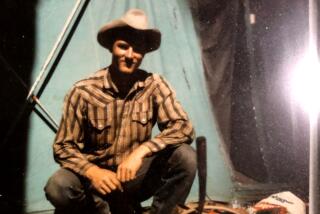Myth, Mystery Shroud Little Bighorn
CUSTER BATTLEFIELD NATIONAL MONUMENT, Mont. — On the losers’ side, there was no one left to tell the tale, to describe the last moments of Custer’s life, the valor of his troops, the tactics of Sitting Bull, the cunning of Crazy Horse.
The winners fled in all directions on their fleet ponies, victorious Indians who had just won the biggest, and last, battle in their 300-year war against white encroachment into a bountiful land that once had been all theirs.
Later, their stories would be sought out not only by a government seeking judgment against them, but also by historians, scholars and a multitude of the curious. Each would tell a different story.
This much is for certain:
The Battle of the Little Bighorn took place in what was then Dakota Territory, 60 miles southeast of Billings, Mont.
On June 25, 1876, a scorching Sunday, five companies of the 7th Cavalry, numbering about 225 officers and troopers, advanced onto a ridge above the Little Bighorn River. They were under the command of Lt. Col. George Armstrong Custer, then only 36 years old but already a flamboyant, controversial Civil War hero.
Below, along the riverbank, was an encampment of about 10,000 to 15,000 Indians, composed of Northern Cheyennes and Teton Sioux. The Sioux actually were seven separate tribes: Hunkpapa, Blackfoot, Oglala, Brule, Two Kettle, Sans Arc and Miniconjou.
Custer ordered the attack. His troopers were vastly outnumbered and outflanked. The soldiers, including two of Custer’s brothers, fought desperately but hopelessly against an estimated 2,500 to 4,000 Indian warriors. The rescue party found only mutilated bodies. No soldier survived.
Crazy Horse surrendered on May 6, 1877, at Camp Robinson, Neb., and was dead within six months, killed in a guardhouse fight. Sitting Bull finally gave up in 1881 and died a broken man.
Ever since that day 114 years ago, when Custer made his “last stand,” says the National Park Service in its official handbook for the Custer Battlefield National Monument, “the full truth of what happened has eluded the assiduous quest of countless students. . . . Into the void has fallen such an accumulation of myth and legend that an entranced public has little hope of distinguishing truth from fiction.”
An enormous body of literature has amassed because of the battle. Countless poems and paintings have been inspired by it. Generations have watched exaggerated film versions of the historical event.
“Still the presses roll and the cameras turn,” says the park service booklet. “The public buys, the controversy rages, and there is no consensus of what happened or why on that bleak Montana ridge in America’s centennial summer.”
More to Read
Sign up for Essential California
The most important California stories and recommendations in your inbox every morning.
You may occasionally receive promotional content from the Los Angeles Times.










